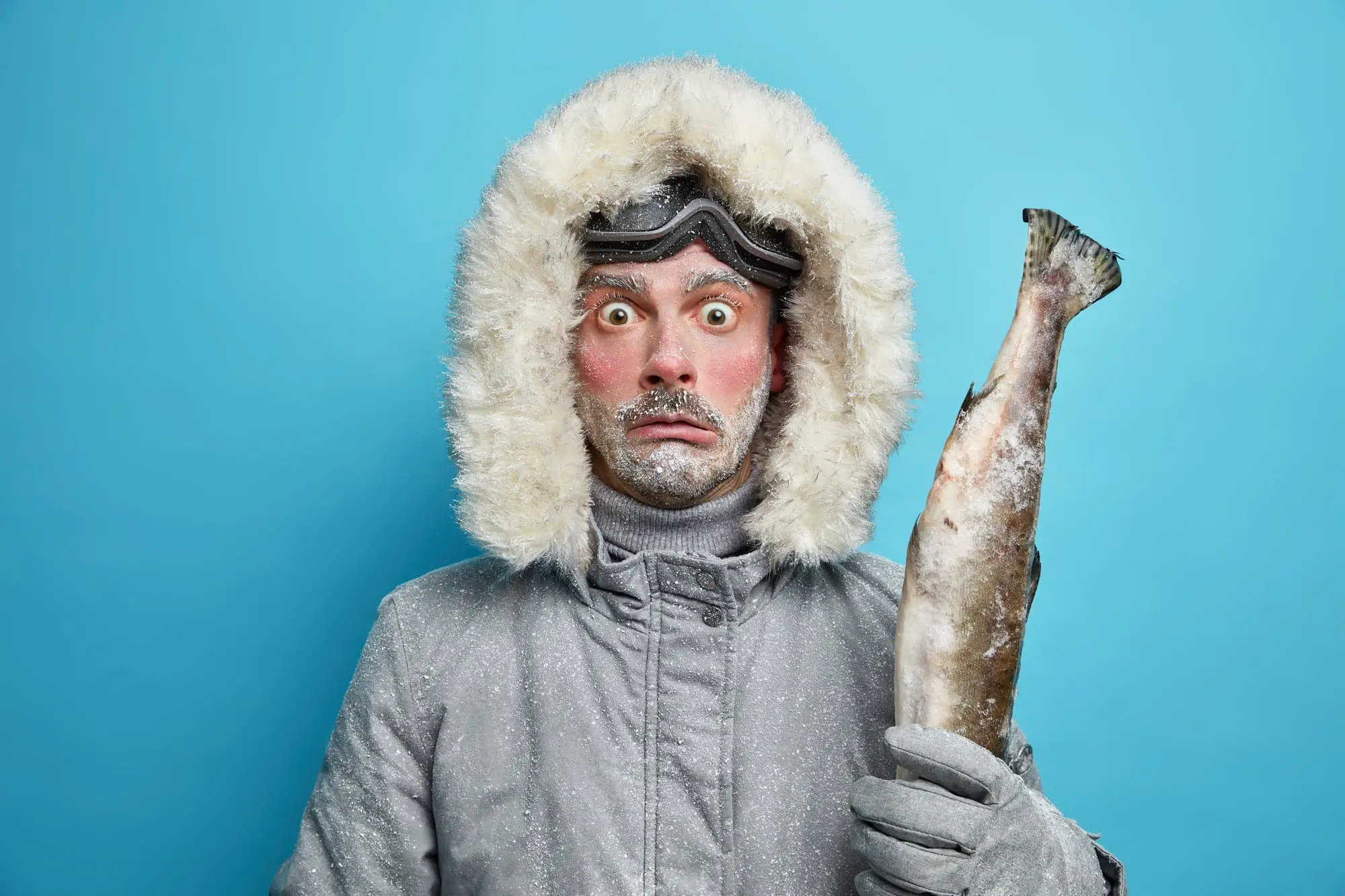Frostbite is a potentially serious injury that can be caused by prolonged exposure to extreme cold and wind. The severity of the resulting tissue damage depends on how much skin was exposed, for how long it was exposed, and the temperature of the environment when frostbite occured. If you’re ice fishing for lake trout, frostbite ice fishing can be a dangerous and serious injury.
This article will discuss frostbite in detail. You’ll learn about topics like how l ong frostbite lasts, if it can be cured, how extreme cold affects fishing and more.
What is Frostbite?
Frostbite is a form of cold injury that happens when your body tissue freezes. Frostbite ice fishing can occur in any part of the body and can cause permanent damage to bones and tissues. Another term for this condition is “chilblains.” It belongs to a group of cold injuries called pernio, along with immersion foot and trench foot.
Chilblains is a medical term used to describe the inflammation and redness of the skin that can occur when it’s exposed to cold temperatures. Chilblains usually affects the extremities, such as the toes, fingers, ears, nose, and cheeks.
What are the symptoms of Frostbite?
The main symptoms of frostbite are:
- Feeling of coldness in the affected area
- ·Numbness or tingling in the affected area
- ·Skin that is pale, waxy, or blue-gray in color
- ·Skin that feels stiff or rubbery to the touch
- ·Blisters that may form after the area warms up again
How long does Frostbite last?
The length of time that frostbite ice fishing lasts depends on how long the affected area was exposed to the cold. The best way to prevent frostbite is to keep your hands warm by wearing mittens instead of gloves, but you should consult a doctor if your skin turns red or feels numb.
Frostbite can be hard to treat once it occurs. If the frostbite is mild, your doctor may recommend that you soak the affected area in warm water (not hot) for about 15 minutes several times a day. If the frostbite is more severe, you may need to be hospitalized so that more aggressive treatment can be given.
Can Frostbite be cured?
Frostbite can be cured, but it might have long-lasting effects on the affected body part. Even if your skin returns to a normal color and feeling after warming up, you may still have a thickened area of tissue called a scar. Sometimes, that thickened tissue loses some of its function.
Frostbite ice fishing that has been present for a long time can cause permanent damage to bones and tissues.
How does extreme cold affect ice fishing?
Extreme cold can have a significant impact on ice fishing. When the temperature dips below freezing, the ice becomes harder and more slippery. This can make it difficult to walk on, and it increases the risk of falling through the ice.
Some anglers choose to ice fish in extreme cold weather, but it’s important to take precautions to avoid frostbite and other cold injuries. Wear warm clothes, including a hat and boots, and stay away from the wind.
The extreme cold can also affect the fishing itself. When the temperature is below freezing, fish tend to stay in deeper water where it’s warmer. This can make it more difficult to catch them. You may also have to deal with icicles and other hazards created by the extreme cold.
Frostbite Ice Fishing Key Takeaways
In conclusion, frostbite is a serious condition that can affect anglers who ice fish. It’s caused by exposure to the cold and usually affects the extremities, such as toes, fingers, ears, nose and cheeks. Frostbite ice fishing occurs when your body tissue freezes and you’ll need to consult a doctor for proper care. You can prevent frostbite by wearing suitable clothing, staying away from wind and keeping your hands warm. If you feel yourself getting too cold, go inside and warm up. The extreme cold can also affect ice fishing itself, so it’s important to take precautions to avoid frostbite and other cold-related injuries when the temperature dips below freezing.

